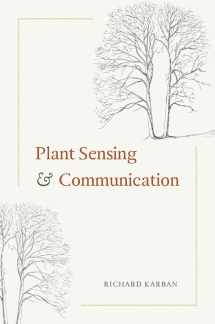
Plant Sensing and Communication (Interspecific Interactions)
ISBN-13:
9780226264677
ISBN-10:
022626467X
Edition:
Illustrated
Author:
Richard Karban
Publication date:
2015
Publisher:
University of Chicago Press
Format:
Hardcover
240 pages
FREE US shipping
Book details
ISBN-13:
9780226264677
ISBN-10:
022626467X
Edition:
Illustrated
Author:
Richard Karban
Publication date:
2015
Publisher:
University of Chicago Press
Format:
Hardcover
240 pages
Summary
Plant Sensing and Communication (Interspecific Interactions) (ISBN-13: 9780226264677 and ISBN-10: 022626467X), written by authors
Richard Karban, was published by University of Chicago Press in 2015.
With an overall rating of 4.5 stars, it's a notable title among other
books. You can easily purchase or rent Plant Sensing and Communication (Interspecific Interactions) (Hardcover) from BooksRun,
along with many other new and used
books
and textbooks.
And, if you're looking to sell your copy, our current buyback offer is $0.3.
Description
The news that a flowering weed—mousear cress (Arabidopsis thaliana)—can sense the particular chewing noise of its most common caterpillar predator and adjust its chemical defenses in response led to headlines announcing the discovery of the first “hearing” plant. As plants lack central nervous systems (and, indeed, ears), the mechanisms behind this “hearing” are unquestionably very different from those of our own acoustic sense, but the misleading headlines point to an overlooked truth: plants do in fact perceive environmental cues and respond rapidly to them by changing their chemical, morphological, and behavioral traits. In Plant Sensing and Communication, Richard Karban provides the first comprehensive overview of what is known about how plants perceive their environments, communicate those perceptions, and learn. Facing many of the same challenges as animals, plants have developed many similar capabilities: they sense light, chemicals, mechanical stimulation, temperature, electricity, and sound. Moreover, prior experiences have lasting impacts on sensitivity and response to cues; plants, in essence, have memory. Nor are their senses limited to the processes of an individual plant: plants eavesdrop on the cues and behaviors of neighbors and—for example, through flowers and fruits—exchange information with other types of organisms. Far from inanimate organisms limited by their stationary existence, plants, this book makes unquestionably clear, are in constant and lively discourse.


We would LOVE it if you could help us and other readers by reviewing the book
Book review

Congratulations! We have received your book review.
{user}
{createdAt}
by {truncated_author}


